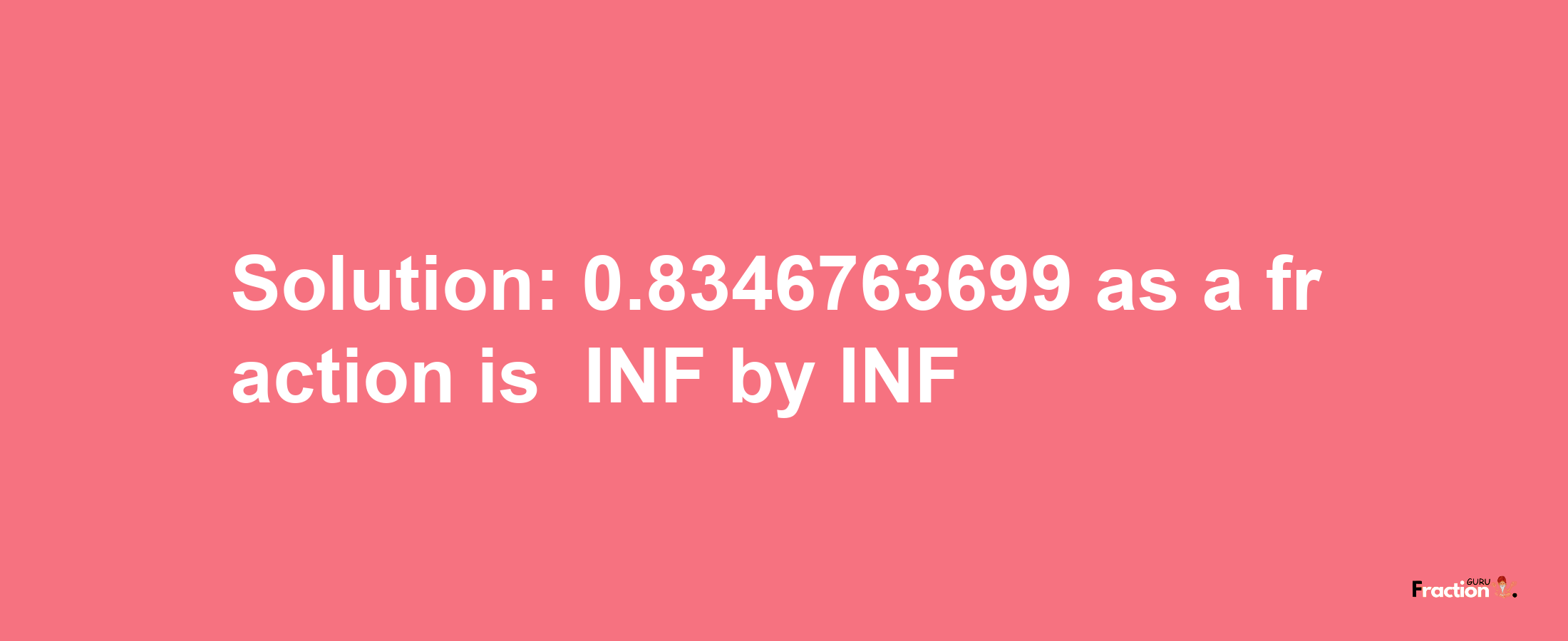Step 1:
The first step to converting -0.8346763699 to a fraction is to re-write -0.8346763699 in the form p/q where p and q are both positive integers. To start with, -0.8346763699 can be written as simply -0.8346763699/1 to technically be written as a fraction.
Step 2:
Next, we will count the number of fractional digits after the decimal point in -0.8346763699, which in this case is 10. For however many digits after the decimal point there are, we will multiply the numerator and denominator of -0.8346763699/1 each by 10 to the power of that many digits. So, in this case, we will multiply the numerator and denominator of -0.8346763699/1 each by 10000000000:
Step 3:
Now the last step is to simplify the fraction (if possible) by finding similar factors and cancelling them out, which leads to the following answer for -0.8346763699 as a fraction:
-INF/INF / 1


